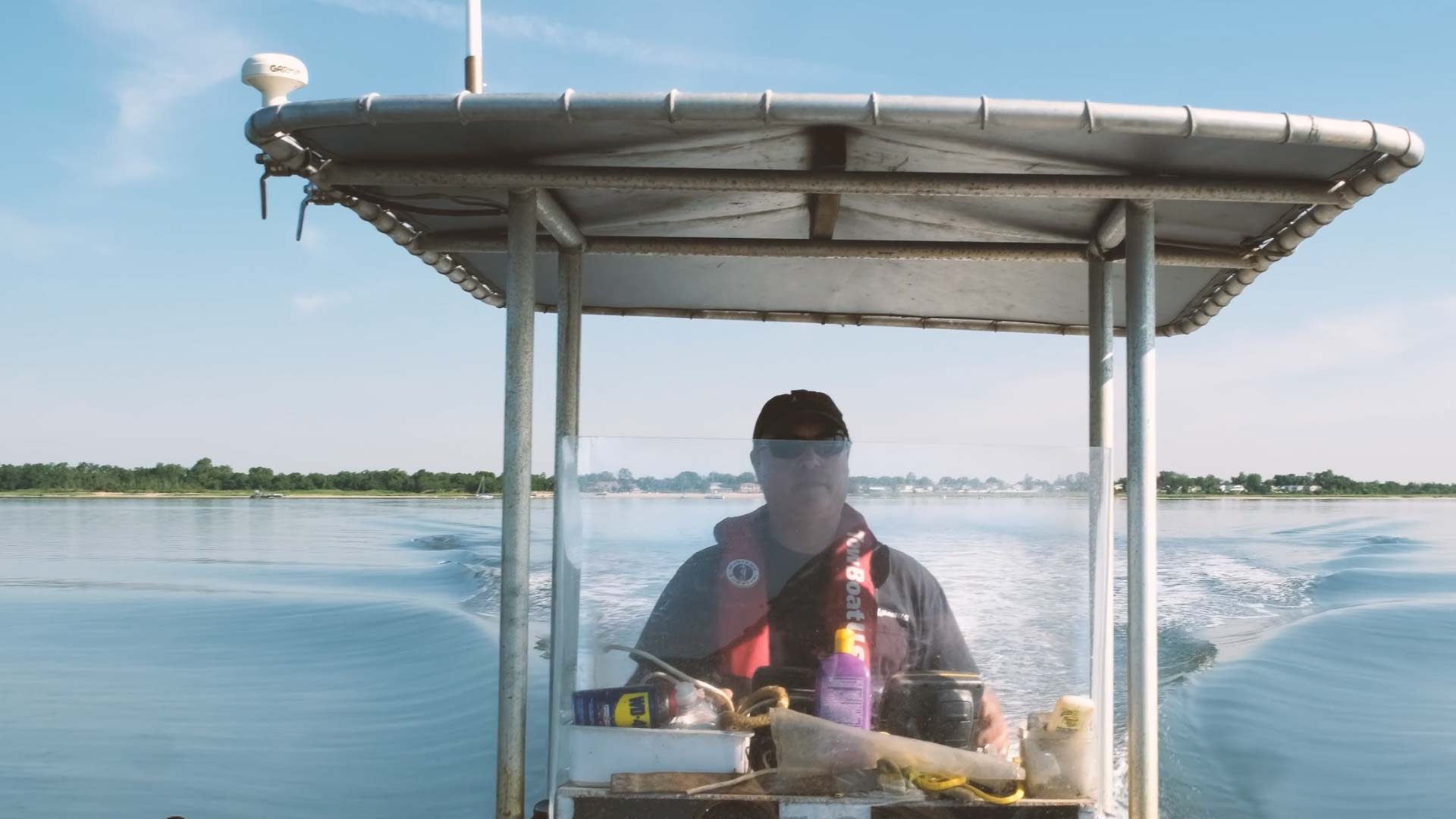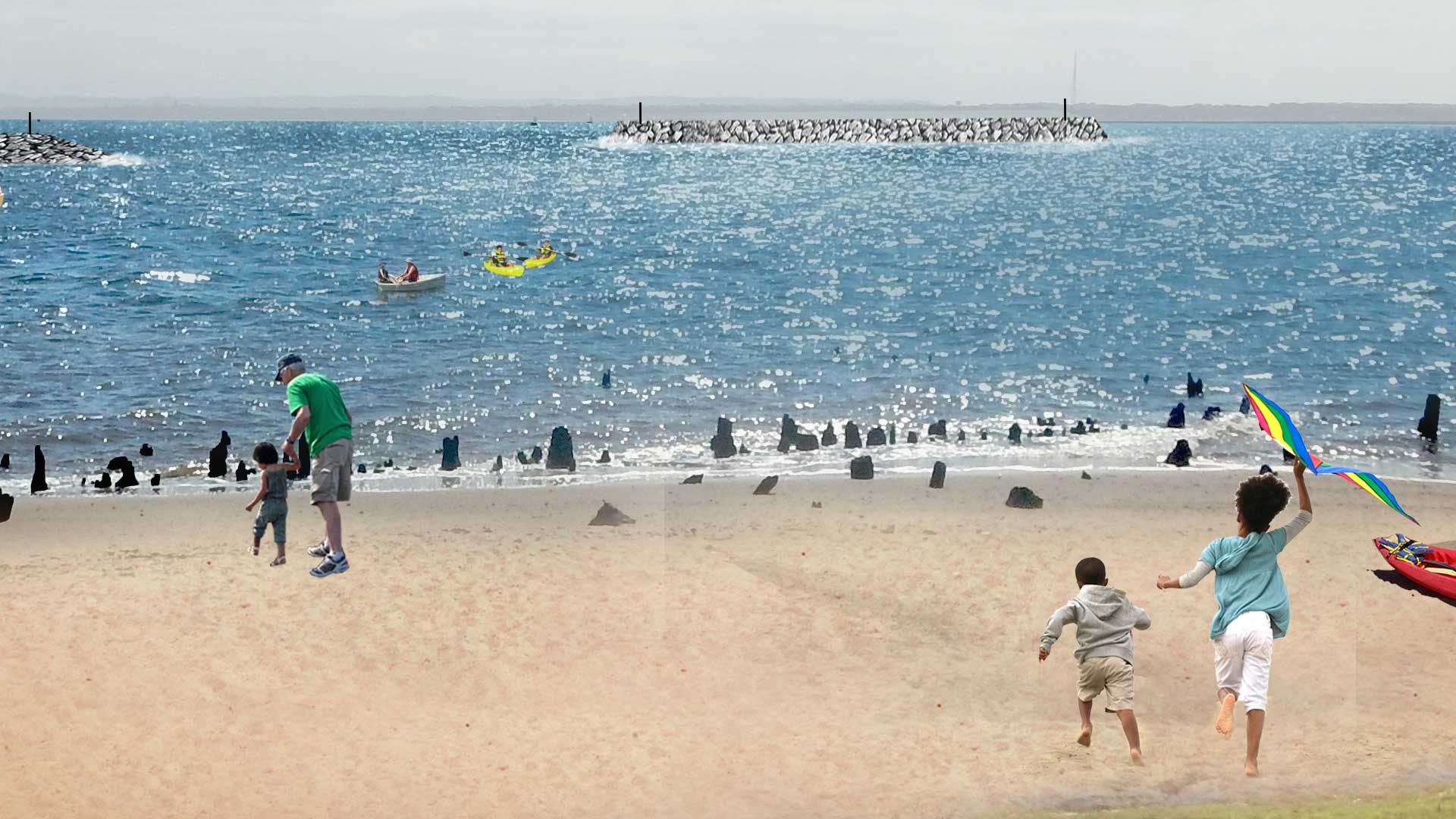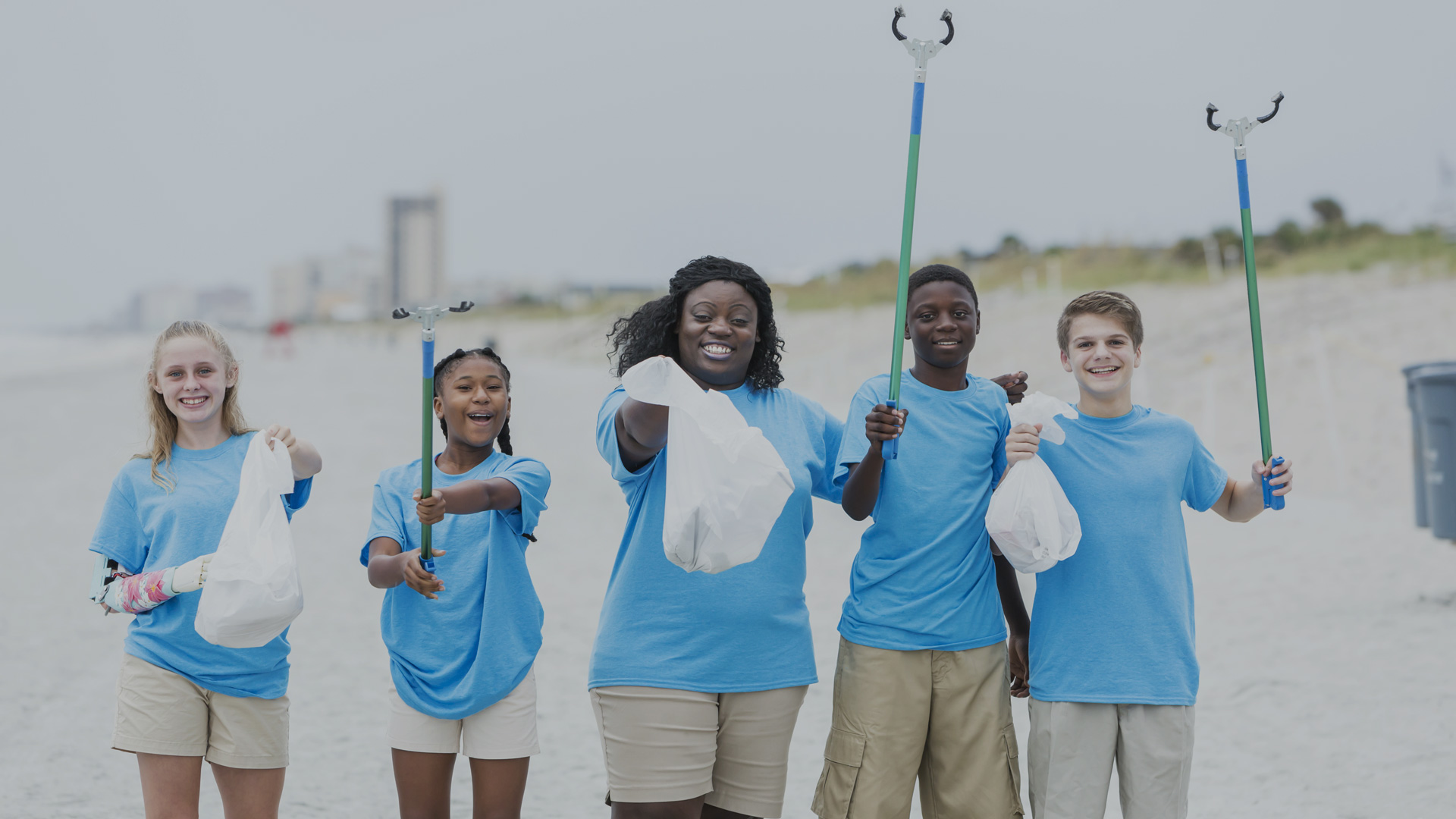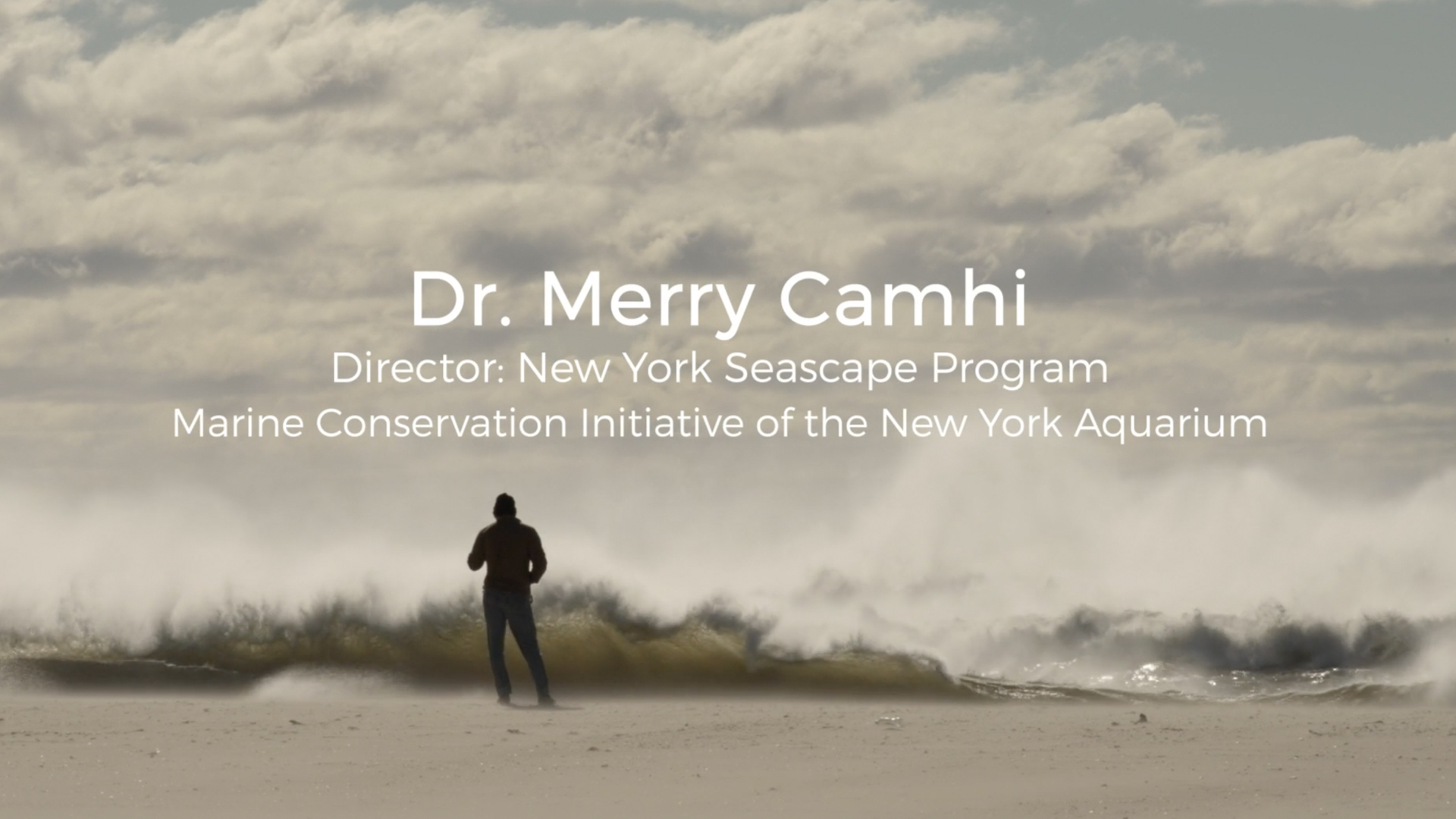A conversation with Mitch Kramer
When did you first begin to consider yourself a conservationist?
I’ve always loved animals. After I got out of school, I ended up answering an ad in the Pennysaver for a farm house for rent. It was on 176 acres. I took my bicycle and I went up, and there’s this big Gold Coast mansion. I knocked on the door and long story short, it was owned by the mob. They had taken over this country club and it turned into a private residence. [This guy] sits me in his chair, and he says, “here’s the story: there’s a farmhouse, there’s barns, there’s horses, it’s all yours. I don’t want to hear from you, I don’t want to see you. If the roof collapses, fix it. If the boiler blows up, get a new one. This is how much it is a month. Do you want it or not?” And [I said], “I’ll take it.”
I moved in there and had a pet raccoon. It lived outside and would come in at night. It ended up breaking its leg. I called up a bunch of vets and they all said you have to put it to sleep, it’s against the law to have a pet raccoon. [Finally] I found a vet that said bring it in, we’ll save it.
[They] put a cast on it the next day, [but it] ate the cast off. [They] brought it back; they did that about a dozen times. [The] raccoon ended up being fine. [I told the vet], look, if there’s ever anything I can do to help you guys out, [let me know].
I told them where I lived and they said, we do Wildlife Rehab. [They did] these soft releases where you take an animal that’s ready to be released, put it in a cage out in the woods or a field and let it get used to the environment, then you open the door. [They asked], could we do that [on your land? [I said], sure.
About a week later, these two girls came. They set these cages up and one of them ended up becoming my wife. I think that was really my start into helping wildlife.
There has to be a balance. This is a very recreational harbor, can there be a balance between that and aquaculture? Absolutely. You have to think outside the box.
How long have you worked and lived in Long Island?
I’ve been on Long Island all my life. I was born in Flushing, and when I was about six months old we moved to East Norwich, which is really Oyster Bay. I’ve been out here ever since.
How long have you been working in Oyster Bay?
We’ve always been into the water growing up. I had a boat when I just started walking, so I spent a lot of time on the water. I went to school in Pennsylvania for a degree in business, [but] I did not want to do the nine to five like all my friends. I ended up coming back to Oyster Bay. For all of my working career I’ve been on the bay.
Did you come to Oyster Bay with the intention of helping the health of the bay and its wildlife?
Primarily, it was [a question of whether] I could make a living spending time on the water. I remember all my teachers telling me, “you can’t do your hobby as a career, you have to focus on something,” [and I said], “you know what, I hear all these miserable people working on Wall Street and for insurance companies. I just didn’t see myself doing that. I started the business I’m in now 30 years ago, right after I got out of college.
What’s your primary role on Oyster Bay?
I own a company called North Shore towing and diving. It’s a tow boat company, and we work with BoatUS, GEICO and a lot of insurance companies. [We’re] almost like AAA on the water, people have memberships [and] if they break down I have boats that tow them in. We keep boats in this area over in Northport [and] Huntington, [and I also] have boats up in Connecticut.
We do a lot of salvage work for insurance companies and boating accidents. My job is definitely not nine to five. The phone rings all the time, all hours of the day and night. From April through November, [work] is literally 24/7 for us. So it keeps me on the water, which was really my tie into the environment. I’ve been fortunate [that] I can make a good living on the water. This area has been really good to me, so I started to take a closer look at the area [and say] it’s time to start giving back.
How did you get involved with Friends of the Bay?
I was involved with [Friends of the Bay] a long time ago, [but] I don’t like spinning wheels. I don’t like talking and not doing. To me, back then, there was a lot of that. I saw good intentions and a lot of good people, but not a lot being done. So, I got away from it for a little while, and [then] they approached me a couple of years ago. They were changing the board, fresh people were coming in and there were a lot of issues at the forefront now. It’s a pretty serious time in the harbor, a lot of changes are coming up. They asked if I would get back involved and I decided to give it a shot. I’m glad I did.
What are some of the key changes you’ve noticed in Oyster Bay over the course of your career?
Let’s take the last five or six years. We’ve definitely noticed [that] the storms have been worse, [and] the types of storms we get have changed drastically from what I remember. We pay attention to wind direction and [the] tides, and years ago we would see a lot of nor’easters at the end of the year in August, September, and October. Now we’re starting to see those [storms] year round. It puts a lot of stress on the area.
There’s a lot of erosion. We’ve seen higher tides play a big role on the shoreline and the shore grasses. We’ve also seen a lot of different species that we’re not used to here. We had beluga whales come into the harbor a while ago. Last year we had a whale [that] ended up passing away in Oyster Bay. We now have seals that come in every year, they’re here all the time. People look at that and say wow, how cool is that? How great is it? I look at it like, why are they here? Maybe there’s no food where they’re coming from, maybe it’s bad that we’re seeing these things. These are things that I’m starting to question now.
How do those changes impact the native wildlife here, and particularly the oysters?
A good example is Shore Road. You see the bulkhead there, there was a big stretch of beach and grass before you got into the bay. Now with these storms, at high tide the water is literally up to the road and actually washed the road out during Hurricane Sandy. They had to rebuild the whole road.
That shoreline is a great example of what’s happening all around the bay. We’ve lost the grasses, and we’ve lost the intertidal oysters. Right now, there’s a big effort to see if we can replenish [them] with artificial reefs. We’re working with the town on that, and possibly planting native shore grasses to see if they can come back.
I think that the biggest impact is going to [come from] erosion, and we’ve noticed the shellfish populations have drastically reduced. That’s generally the [case] all around Long Island and Connecticut. Oyster Bay has always been sustainable. We had an oyster company that had a hatchery, and they would use the harbor like a farm field where they would seed. Then the next year they would work in another area and seed [it] so they were constantly rotating.
They were growing hundreds of thousands of oysters and clams and putting them in the water. Although, there was a lot of controversy (and there still is) [because] they hydraulically dredge, but they were giving back [what] they were taking. The oysters and clams that they were putting in would reproduce, and help keep the natural population up.
A couple of years ago, their leases were expiring in another two years. [From seed to harvest], it takes three to four years [of growth]. There were problems with working the lease out with the town, and they decided to shut their hatchery down. Now [oysters are being taken] and they’re not [being put back into the bay] for the next two years. So between that, environmental stresses, predators, and water quality issues, the shellfish [in] the harbor [has] really decreased. There’s a lot of effort right now to try to replenish the natural stock.
Is Oyster Bay experiencing algal blooms?
We’ve definitely seen an increase in blooms, [and] they show up at times where they shouldn’t. I don’t know exactly why this is happening, there’s still a lot of research being done. One of the big causes is increased nitrogen in the water, which feeds [algae]. [Oyster Bay] is not a very commercialized [area]. There are a lot of large estates with beautiful green lawns [using] a lot of fertilizer, which ends up in the bay [and] contributes to [nitrogen deposition]. Septic tanks are leaching in, runoff from the roads, all of these factors [have always been] a problem. Now, people are saying, “we’ve got to do something about this.”
There are natural things we can do to help this out. One of them is [protecting and restoring] the shellfish, they filter the water. We’ve also gotten into [farming] kelp, which absorbs the nitrogen. It’s [in a] research and development [stage] right now. [Kelp] is a winter crop, and most of these blooms take place in the summer. The nitrogen doesn’t go away in the winter, so there is a benefit, [but] we’re not sure of the actual effects.
We’re still trying to figure out how well it grows out here, [where] to do it, [and] how much of a benefit it has. Can it be a possible business? Business and the environment can work together and be successful. It’s not always about money, and it’s not always about the environment. There’s got to be a balance. We grow [kelp], it helps the environment, it’s a great business for people, [and] the end products [are] used for cosmetics, toothpaste, food, organic soil supplements. Maybe [home owners] can cut down on the nitrogen-based fertilizers and [use] something more organic like [kelp-based fertilizer].
Where is kelp being farmed in Oyster Bay?
Kelp has been around for a long time, [and so have] kelp farms. Connecticut is ahead of us on that curve. When you start to go east, [there’s] colder water [and] more open space. The closer you get to New York City and Long Island – we’re very limited [in terms of] areas [where] we can actually set this up.
There has to be a balance. This is a very recreational harbor, can there be a balance between that and aquaculture? Absolutely. You have to think outside the box. We’ve been experimenting in this harbor for the last two years. Lazy point farms was one of the organizations that sponsored this research and development. We’ve been working with them, and I’ve been working through Friends in the Bay. Two years ago, we had great success. We had kelp lines over by one of the yacht clubs [that] did phenomenal, but other kelp lines along Shore Road and West harbor didn’t do [well]. And the question came up: why is one doing good and one doing bad? There’s still a lot of research that has to be done, [including] more experimentation with depth and water sampling.
The town of Oyster Bay is also working with us on this. They’re setting up sanctuary areas and bay management areas [that are] off limits to commercial harvesting, and in those areas we’ve been replenishing oysters. We may [also] be planting kelp in these areas. If the oysters, clam, and kelp populations are massively abundant, [they] can allow some harvesting to balance it out and keep it healthy. They’re designating more areas for that because right now there’s very few, very few.
What is the current state of the oyster population in Oyster Bay?
The reduced shellfish population is a mystery at this point, there are a lot of factors that are affecting it. In this harbor, in my opinion, it’s a combination of environmental pressures, [such as] runoff, water quality, [and] predators are sometimes a problem out here.
The Oyster Company that had been working out here for 150 years used to do predator control, [but] [the way] they [did] it was not good. They said a lot of their seed had been destroyed by predators, which is something we need to look into. I think one of the bigger problems is regulations on commercial harvesting.
It’s like a free for all right now. We have baymen that hand-rake, and they can go into any of the areas as long as it’s not on any of the leased grounds, and no one really monitors them, they can [take] as much as they want. Having standing stocks of oysters and clams to allow [for] reproduction is going to be a huge benefit for this area. That’s why [it’s] such a good time to be part of this because that’s what we’re looking into. That’s what we’re doing.
A lot of times we have oysters that will set along the shoreline. You come out one day and you see a ton of oysters and you’re like, oh, how great is that? [But then] the next day, three commercials [come] and pluck everything. I don’t like regulation, I am against it, butI think a little more regulation to protect the standing stocks will have a [big impact].
The other big problem is loss of habitat. I’ve made thousands of dives in this harbor, and [we’re seeing] a lot more siltation. [In] areas where there’s hard bottom [and] you have oysters adhering to shells and rocks, those areas get silted in and all of a sudden you’ve lost habitat.
Some [siltation is happening] because of development, [and] some [is caused] naturally [by] storms. We’re looking into restoring habitat for them so they can come back. That can be done artificially, it’s just figuring out the best place to put your efforts for the best results.
What key local industries does Oyster Bay support?
Oyster Bay is a funny place. There’s two types of destinations: there’s a destination, and there’s a hub. A hub is a place people go to go somewhere else. A destination is a place where people go to spend time.
[If] you take Long Island [for example], most of the harbors and bays [are] very developed. They’re not the nicest places to look at. Most of those [places] are hubs; when people travel, they may [stay] overnight in a harbor to go somewhere else. Oyster Bay is still a destination. People go out of their way to come here, and [there is] very little development on this harbor. It’s a place people come to [to] spend time [and] relax. I would say the main attraction here is Oyster Bay itself, [especially] the boating and recreation. [And], of course, people come here to fish. [There’s] not many places like that left. That’s why a lot of people are very protective over this area.
What are a few things that people can do to protect and restore Oyster Bay?
Get involved with local organizations. [Now], there are a lot more volunteer opportunities. There [have] always been volunteer organizations, but now, a lot of these organizations are doing things that are directly impacting the bay. Every week, we have a cleanup [where] we all help clean the shorelines.
We have turtle habitat here, [and] there are volunteer [opportunities] where you go out, count [turtle] eggs, and make sure they’re protected. The best way for an outsider to make an impact [is] through organizations like Friends of the Bay or Volunteers for Wildlife.
On my own, I would have very little effect. [Friends of the Bay], with their goals and the things that they want to do now, they’re super important. Myself, my company, my guys, we help out any way we can.




